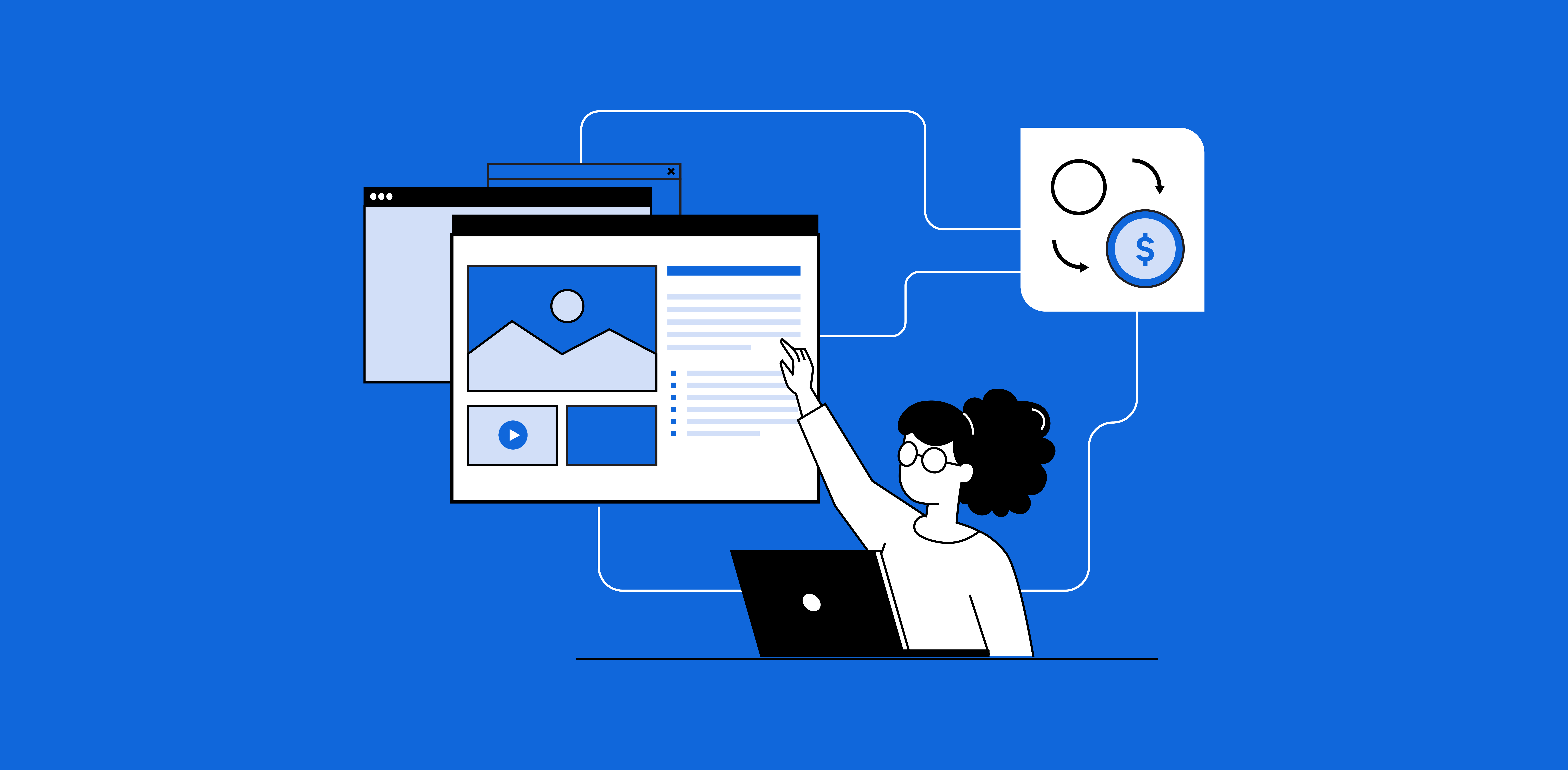Your product content is your sales team on the digital shelf. When customers land on your product pages, your content has seconds to convince them that your product solves their problem better than the alternatives. Get this right, and you transform browsers into buyers. Get it wrong, and you hand customers to competitors.
The challenge isn't just creating great content—it's ensuring that content performs consistently across every retail channel where customers encounter your products. Your premium product descriptions mean nothing if they're not implemented correctly, and even perfect content can't drive conversions if customers can't find your products in the first place.

The Two-Stage Content Challenge
Your content strategy must work across two critical stages of the customer journey:
Discovery Stage: Your content needs to help customers find your products through search—both within retailer websites and on broader web searches. This requires strategic keyword integration, clear category positioning, and search-optimised formatting.
Conversion Stage: Once customers reach your product pages, your content must engage, educate, and persuade. This demands deeper storytelling, comprehensive feature explanations, and compelling benefit communication.
Most brands optimise for one stage or the other. The most successful brands master both simultaneously.
Why Enhanced Content Delivers Superior Results
Research consistently shows that enhanced content drives significant conversion improvements. Brands using comprehensive product storytelling—detailed descriptions, multiple images, videos, and enhanced brand content—typically see 20-30% conversion rate improvements compared to basic listings.
The Psychology Behind Performance
Enhanced content works because it reduces customer uncertainty. Online shoppers can't physically examine products, so comprehensive content becomes their primary tool for evaluation. When your content answers their questions, addresses their concerns, and helps them envision using your product, conversion rates improve dramatically.
Competitive Differentiation
Enhanced content also helps you stand out in crowded categories. When competitors rely on basic product descriptions, your comprehensive content positions you as the premium choice that cares about customer experience.
Your Content Excellence Framework
Layer 1: Strategic Foundation
USP Clarity: Your content must immediately communicate what makes your product different and better than alternatives. This isn't just about listing features—it's about translating features into meaningful customer benefits.
Complete Information Architecture: Anticipate and answer every question a customer might have about your product. Missing information creates doubt, and doubt kills conversions.
Brand Alignment: Ensure your product content reinforces your broader brand messaging and visual identity. Consistent brand experience builds trust and supports premium positioning.
Layer 2: Platform Optimisation
Retailer-Specific Adaptation: Different retailers have different content requirements, customer expectations, and display capabilities. Your content strategy should account for these variations whilst maintaining core messaging consistency.
Search Integration: Incorporate relevant keywords naturally throughout your content to support both retailer internal search and broader web search visibility.
Mobile Optimisation: Ensure your content works effectively on mobile devices, where an increasing proportion of e-commerce browsing and purchasing occurs.
Layer 3: Performance Enhancement
Visual Storytelling: Use images and videos strategically to demonstrate product benefits, show products in context, and address common customer questions visually.
Scannable Format: Structure your content for quick scanning. Use bullet points, clear headings, and logical information hierarchy to help time-pressed customers find relevant information quickly.
Social Proof Integration: Incorporate review highlights, awards, and certification information that builds credibility and reduces purchase anxiety.
Content Implementation and Monitoring
Creating excellent content is only half the challenge. Ensuring it's implemented correctly across all your retail channels requires systematic monitoring and quality control.
Implementation Verification
Your content strategy should include checking that enhanced content appears as intended across all retail partners. This means verifying image quality, text formatting, video functionality, and overall presentation consistency.
Quality Assurance
Monitor whether the right content appears in the right places. This includes checking that current product imagery is used, appropriate keywords appear in titles and descriptions, and enhanced content modules display correctly.
Performance Tracking
Measure how content improvements impact key metrics like conversion rates, search rankings, and overall sales performance. This data helps you understand which content investments deliver the best returns.
Advanced Content Strategy Considerations
Localisation and Market Adaptation
Global brands need content strategies that work across different markets, languages, and cultural contexts. This goes beyond translation to include cultural adaptation of messaging, imagery, and value propositions.
Regional Personalisation: Consider how your product benefits resonate differently across markets. Premium positioning might work well in some regions whilst value messaging performs better in others.
Language Optimisation: Ensure translations maintain the persuasive power of your original content whilst incorporating local search terms and cultural nuances.
Dynamic Content Management
As your products evolve and market conditions change, your content strategy should evolve too. This requires systems for updating content efficiently across multiple channels whilst maintaining quality and consistency.
Lifecycle Management: Plan how your content will adapt as products mature, from launch excitement through established market presence to eventual phase-out.
Seasonal Adaptation: Consider how your content emphasis might shift based on seasonal usage patterns, promotional periods, or changing customer priorities.
Competitive Intelligence Integration
Your content strategy should account for competitive dynamics in your category. Understanding how competitors position similar products helps you identify opportunities for differentiation.
Gap Analysis: Identify information gaps in competitor content that you can fill to provide superior customer experience.
Positioning Opportunities: Look for ways to highlight your unique advantages that competitors can't easily match.
Measuring Content Success
Track both leading and lagging indicators of content performance:
Discovery Metrics: Monitor search rankings, click-through rates from search results, and overall product page traffic to understand how well your content supports customer discovery.
Engagement Metrics: Track time spent on product pages, scroll depth, and interaction with enhanced content elements to gauge customer engagement levels.
Conversion Metrics: Measure conversion rates, average order values, and overall sales performance to understand business impact.
Quality Metrics: Monitor content implementation accuracy across retail channels to ensure your strategy executes as intended.
The Integration Imperative
Content excellence doesn't exist in isolation—it's part of your broader digital shelf performance. The best content in the world won't drive sales if your products aren't available, competitively priced, or visible in search results.
This is why leading brands integrate content strategy with comprehensive digital shelf analytics. They understand that content optimisation works best when informed by availability data, competitive intelligence, and search performance insights.
For example, if analytics show that customers frequently search for specific product features, you can update content to better match search intent. If competitive analysis reveals pricing pressures, you can adjust your content strategy to emphasise value rather than features.
Your Implementation Roadmap
Content Audit: Review your current content across all retail channels to identify gaps, inconsistencies, and improvement opportunities.
Prioritisation Strategy: Focus initial efforts on your highest-volume products and most important retail partnerships where content improvements will have the greatest business impact.
Quality Systems: Implement monitoring processes to ensure content maintains quality and consistency as you scale across more products and channels.
Performance Measurement: Establish feedback loops that connect content improvements to business outcomes, helping you understand which investments deliver the best returns.
The Competitive Reality
Your competitors are investing in content excellence. The brands that approach product content strategically—understanding both the discovery and conversion stages whilst maintaining quality implementation across channels—consistently outperform those that treat content as a basic operational task.
Your product content represents one of your highest-leverage opportunities for improving digital shelf performance. When customers are ready to buy, your content either convinces them to choose your product or it doesn't. Make sure yours does.
Ready to transform your product content into a powerful conversion tool? Our platform helps brands optimise content effectiveness, monitor implementation quality, and measure business impact across all major retail channels. Discover how our content intelligence can drive your growth.

